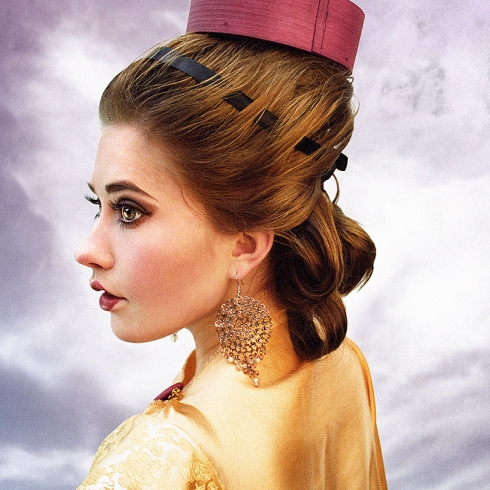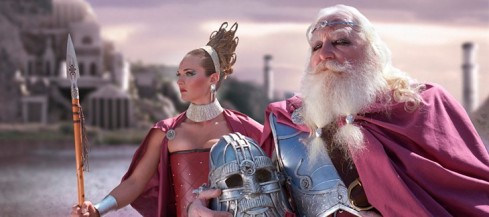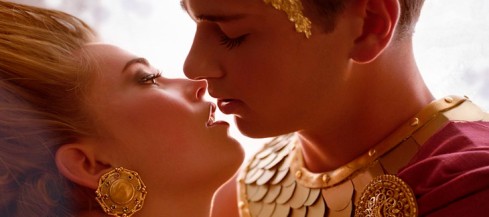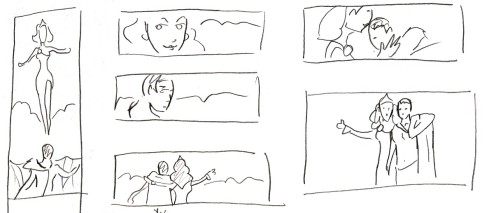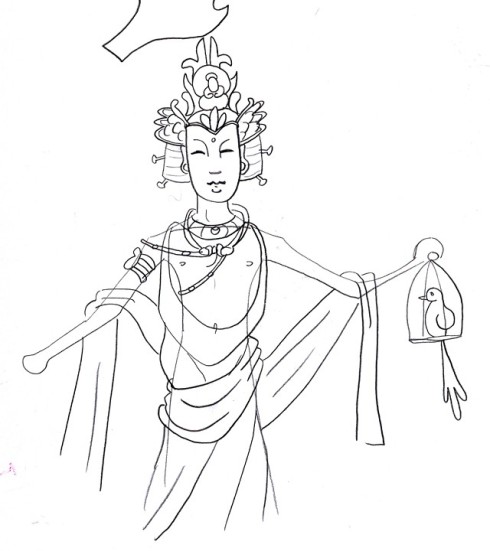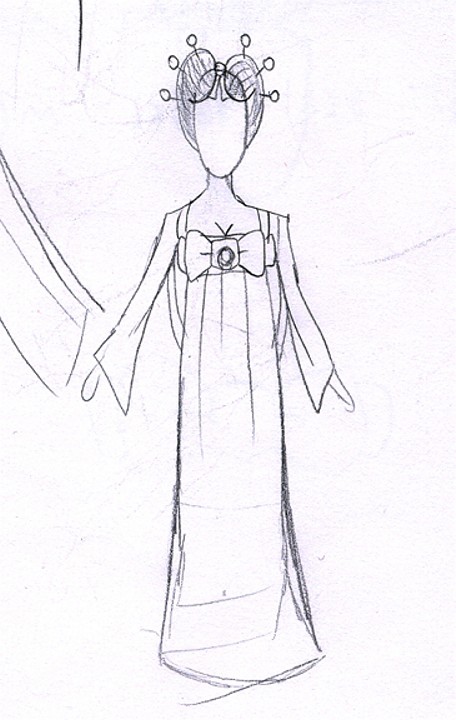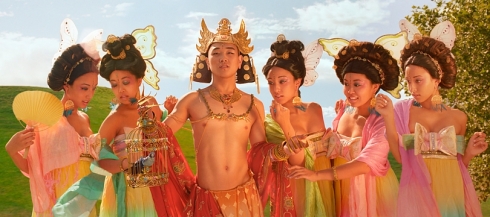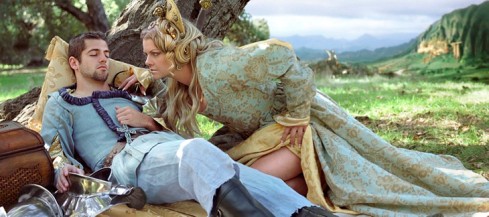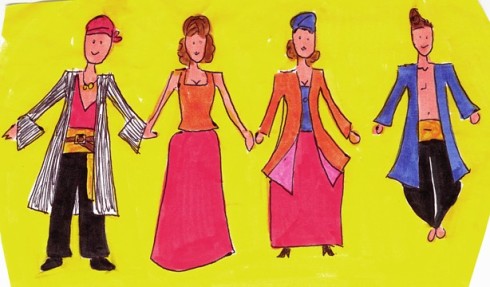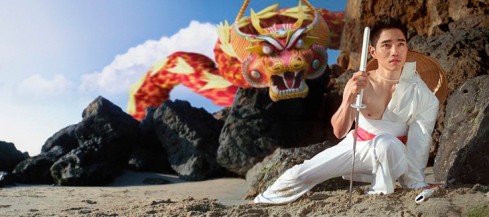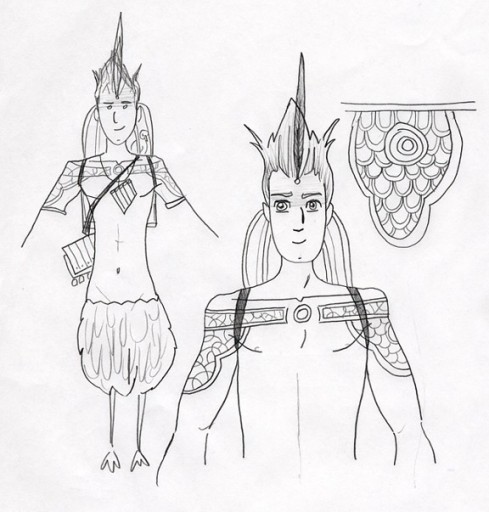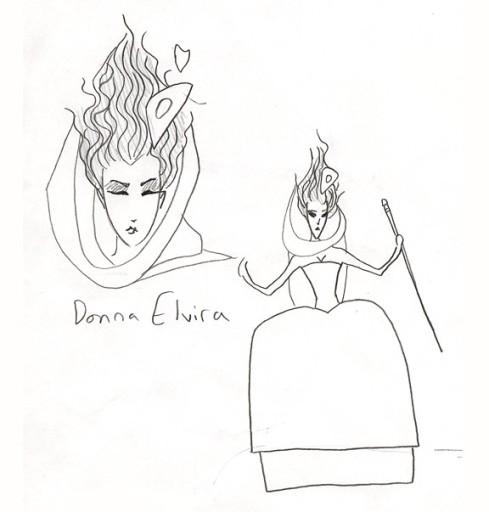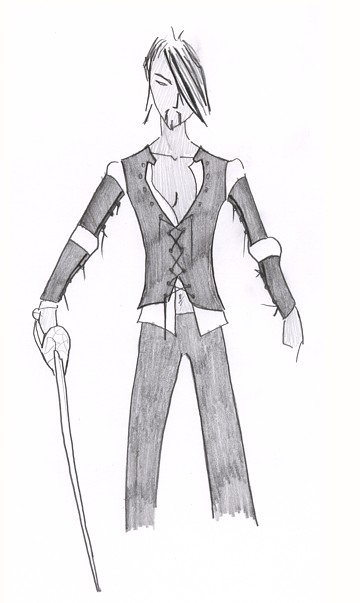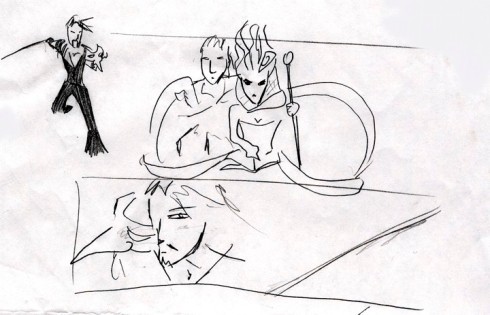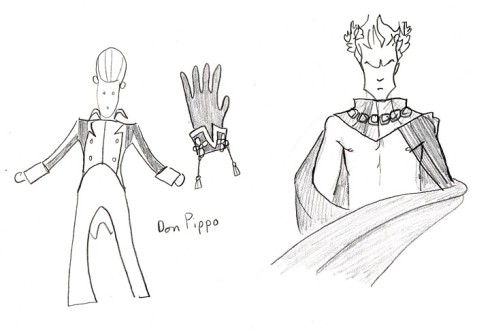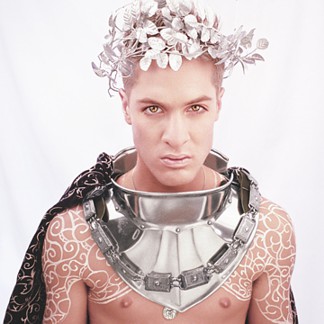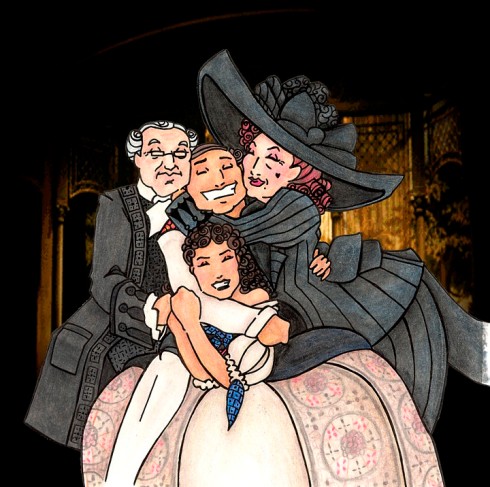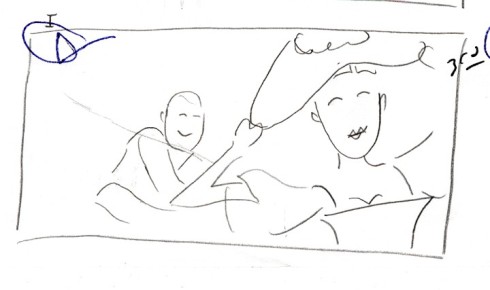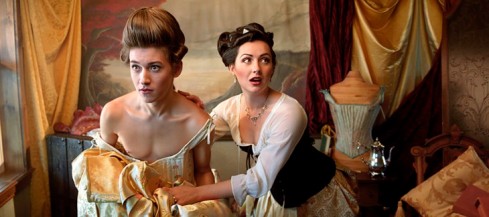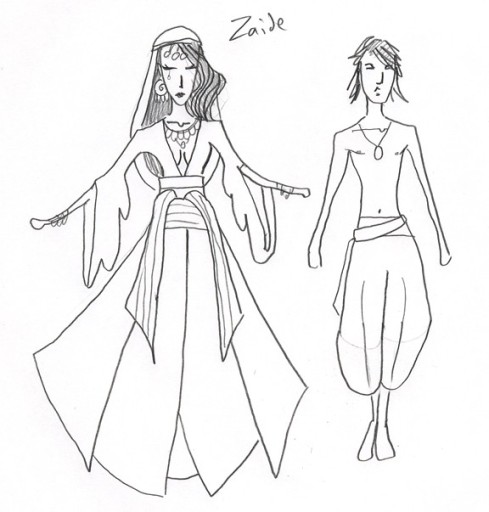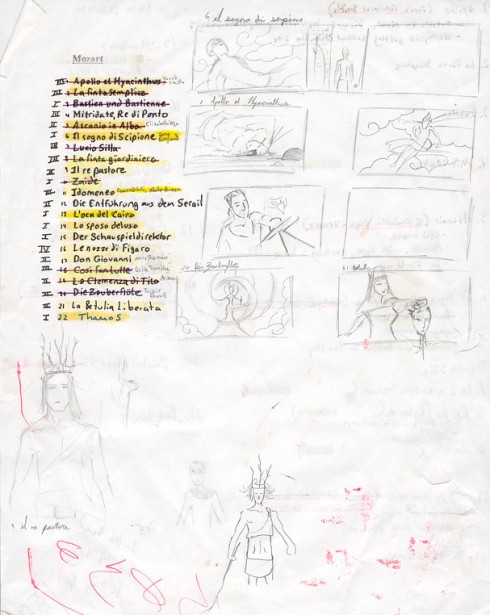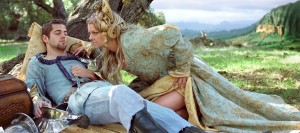The opera “Mitridate” by Mozart tells the story of the last days of Mithridates VI, tyrant king of a land known as Pontus. The spelling “Mitridate” is the Italian spelling of “Mithridates”, because the opera was written in Italian. The opera “Mitridate” is historical fiction. Many of the characters portrayed are real people, and many of the events happened in history in some form or other. The opera, like most biography dramas, changes a lot of facts for the sake of drama, but also includes many interesting things that happened in the life of this historical figure.
Mithridates VI Eupator Dionysius
Mithridates was essentially the Hitler of the ancient world. He was universally hated (outside of his Kingdoms) because of his genocidal tendencies and his strong military. He was an enemy of Rome throughout the course of many wars, opposing such famous military leaders as Pompey the Great and the great dictator Lucius Cornelius Sulla, when Sulla was still only a general. Pontus (seen in the map below in purple) spanned a large part of Northern Turkey and the Southern shores of the Black Sea in the ancient world. Mitridate was king of Pontus from 120 b.c. to 63 b.c., which is a lengthy 57 year reign.

Pontus
In the opera, Mitridate pretty much sentences every single character to death at some point. Notable is Mitridate’s penchant for poisoning people, which is something he did regularly in real life. He was also very concerned that somebody would try to poison him. Certain of an assassination plot, Mitridate gradually built up an immunity to poison throughout his life by taking sub-lethal doses and creating “Mithridatum“, or medicines he created himself, that have since been proven to help reduce swelling.

Mithridates is seen in this statue portrait dressed as Hercules, a god whose likeness Mithridates often used in propaganda.
The Wives of Mithridates
1. Laodice
Mithridate’s first wife was also his sister. Laodice is pretty much the epitome of a bad first marriage. After a short while the Queen began to take lovers while her husband was at war. She even had an illegitimate son, which surprised Mithridates when he returned home unexpectedly, because he had been gone longer than nine months! Soon thereafter, he walked in on her with her “lovers” (which I put in quotes because the plural form suggests many things to the imagination). As if that wasn’t enough, he also discovered she and her lovers were going to attempt to assassinate him with poison at his welcome home party. Needless to say, Laodice and her lovers did not survive the night. They were executed and Mithridates cursed his mother for bearing such a wicked daughter.
I guess the moral of the story is don’t marry your sister.
Laodice is the mother of the evil son Pharnaces II (Farnace), one of the main characters from Mozart’s opera.

This fascinating architecture, which I think is a bit later in history, is actually located in the Pontic landscape. Trabzon, Turkey, used to be a part of Pontus. Vazelon Manastiri, Macka, in Trabzon. Photo by Efkan Sinan.
2. Monime
Coming up second was the lady with the very Star Wars-y name, Monime. Mithridates was visiting some Greek allies, and saw the beautiful daughter of his friend. Monime and her father saw at once that Mithridates was enamored of her. They basically extorted the King for an enormous sum, and numerous titles, to buy her and take her home. Which Mithridates did. While Mithridates did like her intelligence, which is notable, as well as her beauty, she proved to be fairly cunning, and they grew estranged. She was executed during the Mithridatic wars. I’m assuming it was the Roman enemy that killed her, because after Mithridates defeat, they gave careful consideration to purging the Mithridatic line by killing all members of his family who might have an hereditary claim to the throne.
I guess the moral of the story is don’t marry any woman whose terms of marriage resort to extortion.
Monime is the basis for the character of Aspasia in the opera “Mitridate.” We know this because Mozart’s opera is actually a remake of a French play by Jean Racine. In the original all the characters names are the same except for Monime, which was changed to Aspasia in the Italian opera.

Mount Nemrud, a statue covered mountain which was fully functional (not in ruins) in the Ancient Turkey when Mithridates ruled the land.
3. Berenice
Mithridates married Berenice, and seems to have been much pleased with her, because though she started out as a mistress/concubine, she eventually became a wife. When the Romans had seized upon them, Mithridates commanded Berenice to kill herself with poison. However, the poison did not fully work, and so she had to be strangled.
I guess the moral of this story is don’t marry a psychopath.
In the opera, Mitridate’s young fiancee, Aspasia, is given a chance to kill herself with poison. While the appearance and personality of Aspasia seem to have been drawn from Monime, perhaps this scene was inspired by the final moments of Berenice’s life?
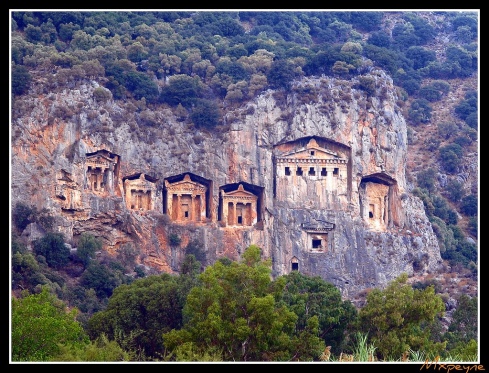
The Kaunos Rock Tombs existed in Ancient Turkey, and are an example of contemporary architecture during Mithridates reign. Photo by mxpeyne.
4. Stratonice
Strangely enough, the life of Stratonice seems to be the most operatic out of the bunch, even though her story was not used in the opera. Like the previous wife, Berenice, Mithridates seems to have liked Stratonice. She was the mother of Xiphares (Sifare) who is another of the leads in the Mozart Opera. However, things took a terrible turn during the Mithridatic Wars.
Stratonice was put in command of a mighty fortress which held much of the Pontic treasure. When Pompey the Great attacked and conquered the city, Stratonice yielded the fortress on the condition that Pompey let her son Xiphares live. When Mithridates discovered her betrayal, he had her punished by forcing her to watch the execution of Xiphares anyway, this time at the hands of her own people rather than the enemy. The boy was 20 years old. This event is loosely referenced throughout the opera.
A few short years later, Stratonice was executed during the purge of Mithridatic line by the Romans.
I guess the moral of the story is don’t do anything at all, ever, if you want to be sure of anything. Poor dear.
5. Anonymous
Wikipedia doesn’t have any information on this anonymous woman, however, I do know that when Mithridates was finally certain of his defeat, he had his wife and children take poison (Just like in Hitler’s bunker a thousand years later!) and perhaps this was the wife mentioned in that scenario.
I guess the moral of the story is, if you’re going to marry a tyrant, you might as well do something wild and crazy, or else you’ll go down in history as boring old “anonymous”.

The Celsus Library, a contemporary example of architecture in Mithridates time, Ancient Turkey.
6. Hypsicratea
Hypsicratea was an amazonian warrior woman! (Quite literally, as she was Caucasian, and Caucasus was the area where the Amazon women were said to have hailed from!) Mithridates married Hypsicratea because he felt that she was his intellectual equal. She did not want to leave his side, and so she trained in war craft, mastering the use of the axe, lance, sword and bow & arrow. With these skills, she equipped herself as a warrior and accompanied Mithridates everywhere he went as his bodyguard.
When Mithridates began to lose the wars, and the tides turned against him, Hypsicratea was one of the few who remained with him. Plutarch noted that she was indefatigable. Mithridates claimed that he was always at home because his wife was always by his side.

Hypsicratea, Warrior Queen of Pontus
Nobody knows what happened to Hypsicratea after Mithridates death. However, there is a very interesting theory. Because she became a warrior, her husband called her Hypsicrates, which is the masculine form of her name. There is a Pontic historian and old friend of Mithridates who wrote under the name Hypsicrates for many years after the kings death, until their own death as an elder. Some have speculated that this Hypsicrates was actually Hypsicratea, since there are many coincidences to connect them, such as being close to the King, being the correct age, having the same name, her noted intelligence etc. It is assumed that she lived out the rest of her life in disguise to avoid the purge, and carry on her husband’s story.
Which would be totally awesome if true.
I guess the moral of this story is that if you’re going to be awesome, you might as well just pull out all of the stops and go for it!

Ancient Turkey. These ruins from the south would perhaps have been a part of Mithridates domain at one time, but not of Pontus proper. Photo by Willi Seiler.
The Most Important Son of Mithridates
Pharnaces II, the Evil Son
Just as in Mozart’s opera, Pharnaces (Farnace) did historically lead the Roman rebellion against his father. This is something that is downplayed in the opera to make the character more sympathetic, though he was the villain of the original French play by Jean Racine.
In the opera, Farnace feels torn between loyalties, and eventually turns against the Romans to help save his Kingdom. However, in real life, Farnace’s full on betrayal by siding with Rome was one of the major turning points in the defeat of Mithridates.
Surrounded on all sides by friend and foe, this is when the historical Mithridates had his family killed by poison and even attempted to poison himself when he realized he was doomed. However he failed. Remember how I mentioned earlier that he had developed an immunity to poison? Yeah, well, he tried to poison himself, but it didn’t work due to his hard earned immunity to it. From here, the story splits. The first version is that he had himself stabbed, as in the opera. The second is that the rebels fell upon him and stabbed him to death. Either way, he was stabbed.
I guess the moral of the story is, if you want to commit suicide by poison, don’t spend all of your freaking life developing an immunity to poison.
After a few years of peace with Rome, the real Pharnaces decided to follow in his Father’s footsteps and oppose Rome. When the Romans sent Julius Caesar to battle, Pharnaces was quickly defeated and Caesar is famously quoted as saying “I came, I saw, I conquered.”
Final Words
Mitridate’s penchant for brutality and having people executed crosses over into Mozart’s opera, but his full cruelty is barely touched upon. It is said that he had every Roman in Asia executed, which is what fueled his seemingly unending battle with Rome. He was brutal towards most of his wives and children, adept on the battlefield and long lived. He was certainly much more of a tyrant than the opera would have us know.
Tags: ancient, architecture, Essay, history, Mithridates vi, Mitridate, Mozart, Opera, pontus, turkey

